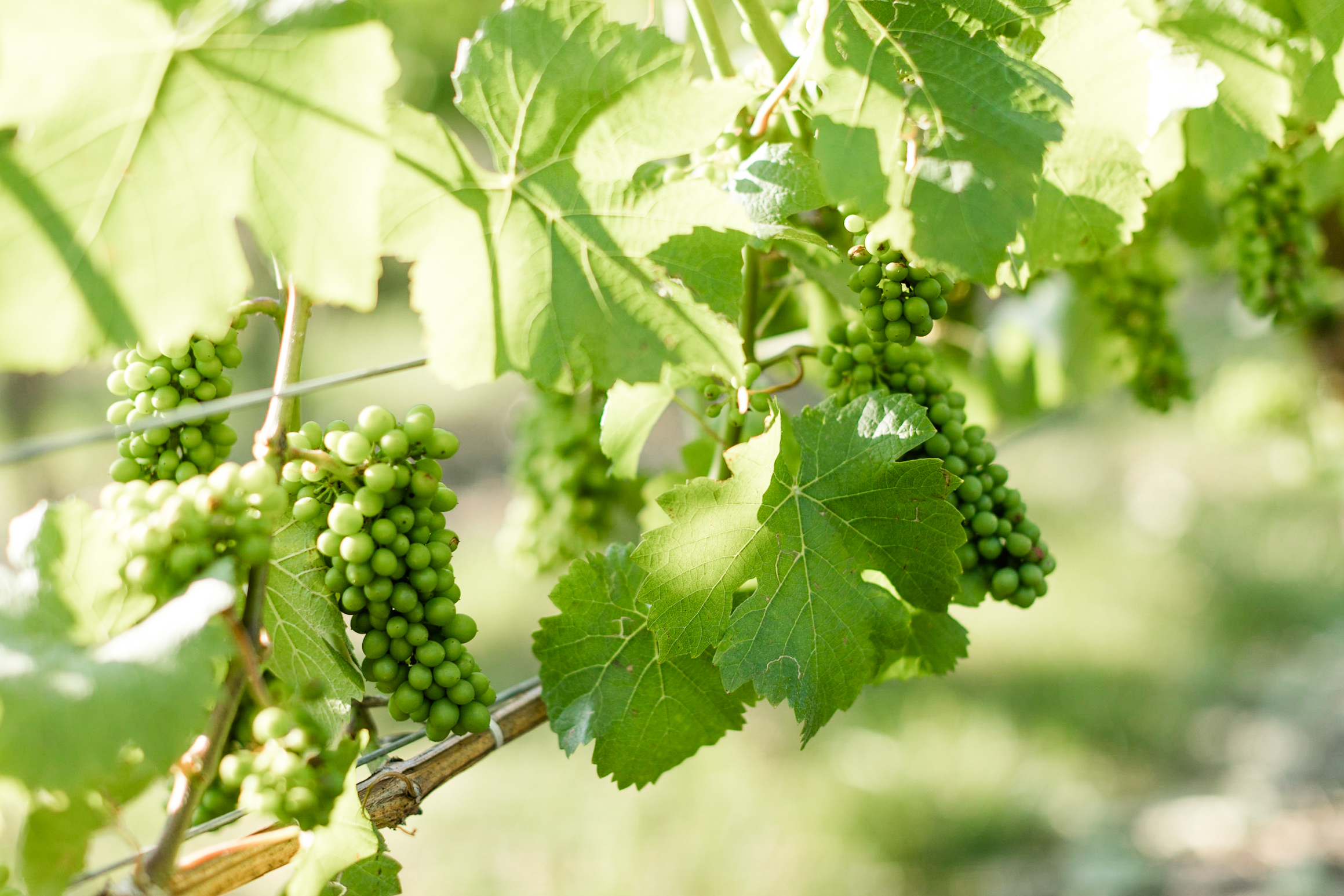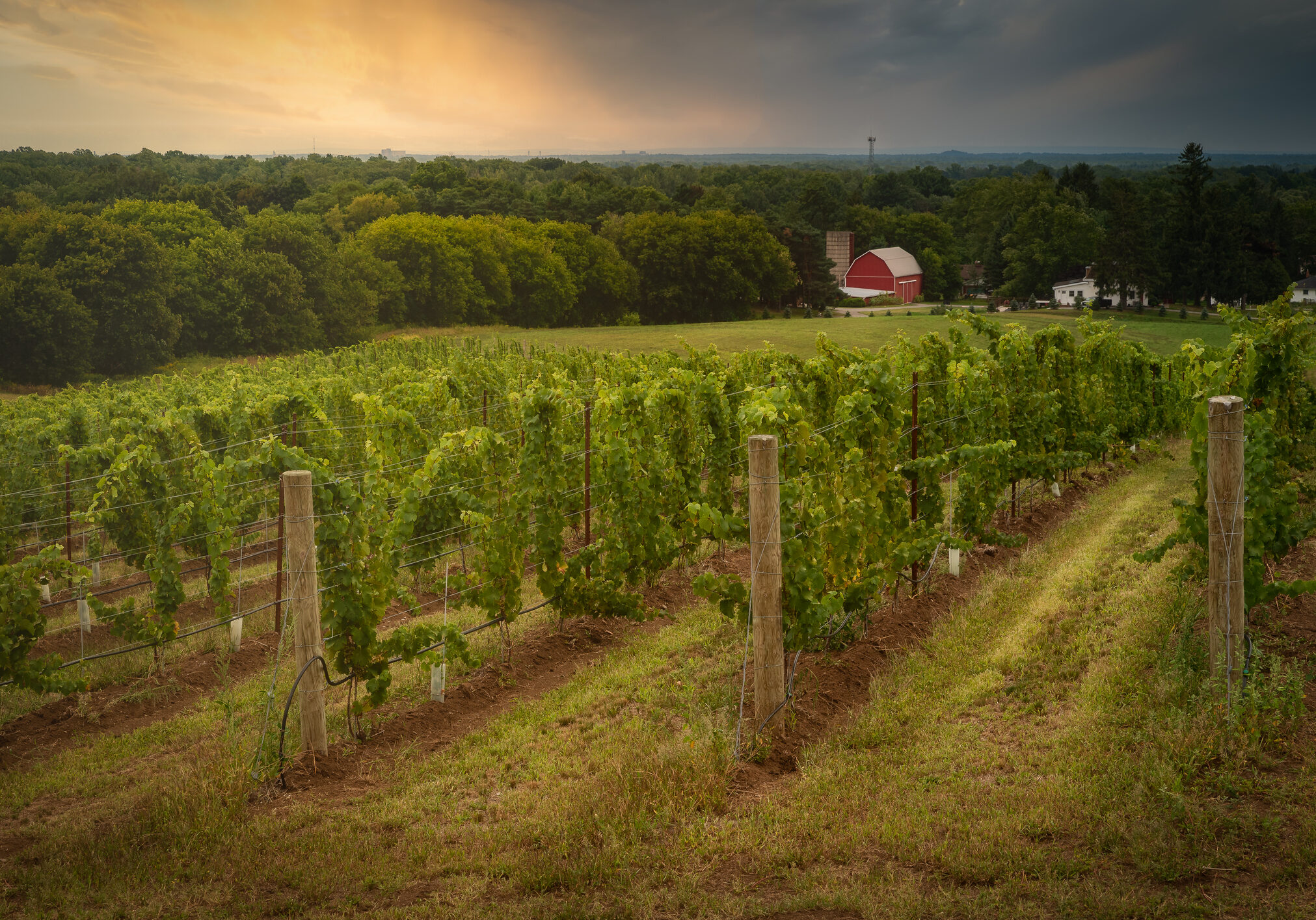Niagara Peninsula
BEAMSVILLE BENCH
Sub-Appellation STATS
2021-22 Annual
Production (9L Cases)
Growing
Degree Days
Number of
Wineries
Number of
Appellation Wines
Common Varieties Pinot Noir Chardonnay Riesling
Appellation OVERVIEW
The Beamsville Bench, running from the creek gully just west of Cherry Avenue to Park Road west of Beamsville, is the narrow plateau sloping gradually from the cliff of the Niagara Escarpment northwards to Regional Road 81, marking the bottom of the crescent-shaped Lake Iroquois Shore Bluff. To the west, the Bench rises into the moderate slopes of the Bell Terrace, where many of the area's vineyards are located, on steep slopes above deep, wooded ravines and on the sides of small ridges and slopes of the numerous streams that cut through the landscape.
Sloping BEACHLANDS, limestone enriched SOILS, fresh elegant MINERALITY
This sub-appellation reaps the benefits of the bench topography which provides the continuous air circulation that moderates temperature and results in consistent growing conditions. Soils are generally deep and well drained and numerous streams provide seasonal water supply.
Characteristics
TOPOGRAPHY
Small streams and ravines dissect the gentle slopes and swales of this sub-appellation, creating a complex landscape with mostly north and east-facing slopes. During the dry summer months, the headwaters of these streams, some originating at the base of the Niagara Escarpment, serve as a reliable water resource for vineyards. In the spring, excess surface runoff and groundwater are easily drained away into Lake Ontario. The higher elevation of the bench combined with the airflow patterns of the escarpment allow for cooling breezes in summer and warming breezes in winter to reach the entire appellation.
SOIL
Soils in this appellation form a heterogeneous mixture of boulders, gravel, sand, silt and clay, as well as bits of shale, sandstone and limestone from the continuing erosion of the Niagara Escarpment. This complex mix has resulted in soils that have a relatively high water holding capacity but with good drainage in the sub-soils. This provides an important advantage in dry summers when rains are insufficient for growth, and make the land particularly well suited for viticulture. Dolomitic limestone is an important component in the soils and is thought to have a direct impact on the mineral character found in many Beamsville Bench wines. The soils also show a striking visual feature - varying colours of red, yellow and olive clays occurring in approximately equal proportions, reflecting the colours of the shale and sandstone bedrock.
Produced by and shared with permission from the Wine Marketing Association of Ontario/VQA Wines of Ontario.
CLIMATE
The combination of short slopes of moderate steepness, high elevation and lake breeze circulations moderate both day and night temperatures and lead to a very small range of temperatures from day to night during the growing season. Heat tends to accumulate across the sub-appellation, beginning in May and continuing well into the third week of October, establishing a long growing season and fully mature, well ripened grapes at harvest time.
The relatively high elevation of the area and the almost continuous lake breezes even out the heat, and keep the humidity in the vine canopy in check during the warm months of July and August.
Notable Features
The mineral rich soils and complex landscape of the Beamsville Bench provide ideal conditions for growing grapes. Sloping vineyards backed by the escarpment, moderating breezes and excellent drainage all contribute to the natural character of the wines from this appellation.
Wine personalities
The dramatic bench topography and complicated soils of the Beamsville Bench nurture vines and inject a bracing minerality into the wines.
Rieslings can showcase the mineral character of the soils with attributes like wet stone along with grapefruit, lemon, and lime with racy acidity.
Other whites are medium weight and show the same balanced acid structure that makes these wines crisp and refreshing.Expect the red wines, including Gamay Noir and Pinot Noir, to show silky fruit and an earthy nose.

Appellation
NIAGARA PENINSULA
Situated at approximately N43° latitude this prime and diverse appellation is characterized by rich, fertile soils and unique meso climates, which provide ideal conditions for producing wine grapes with more complexity and intense flavour than in many warmer climates.



